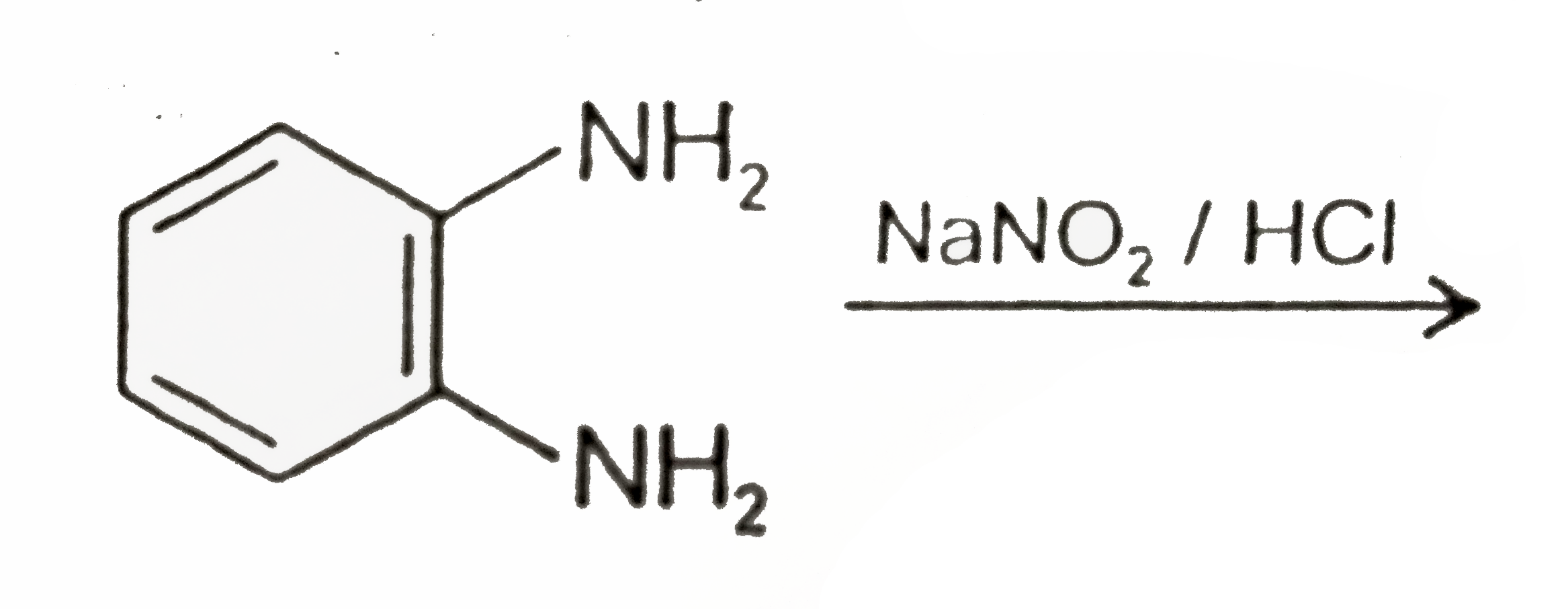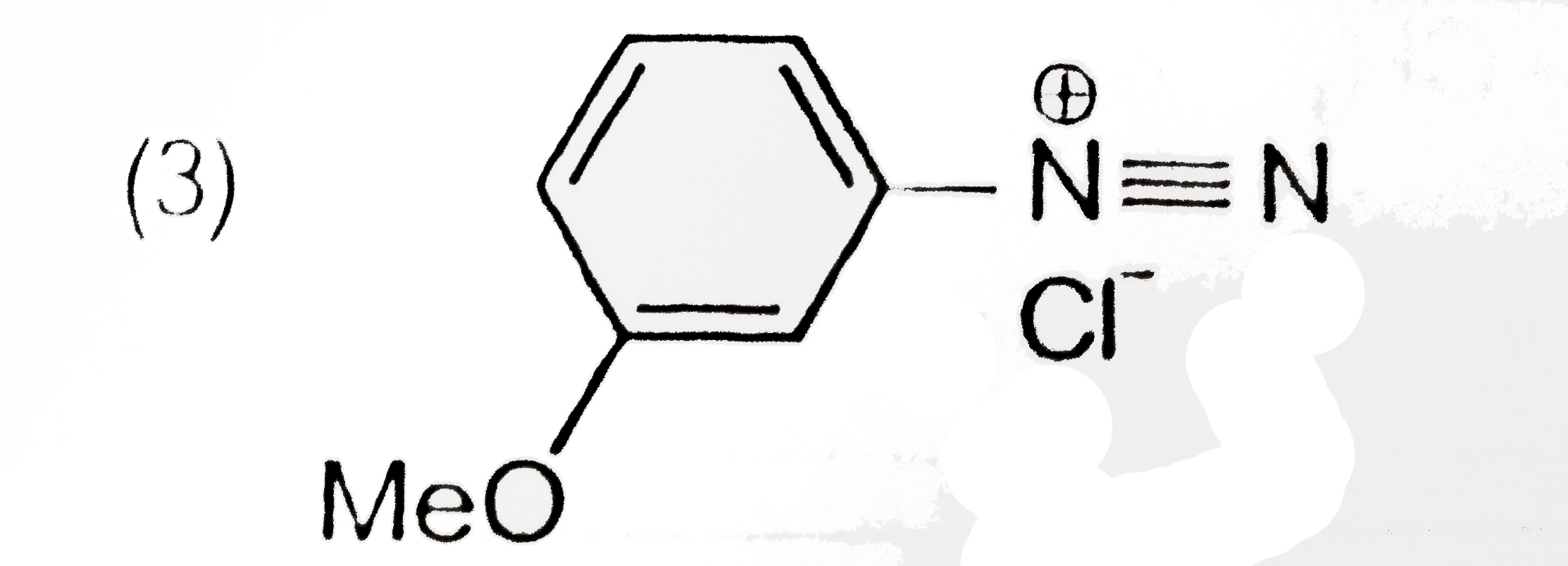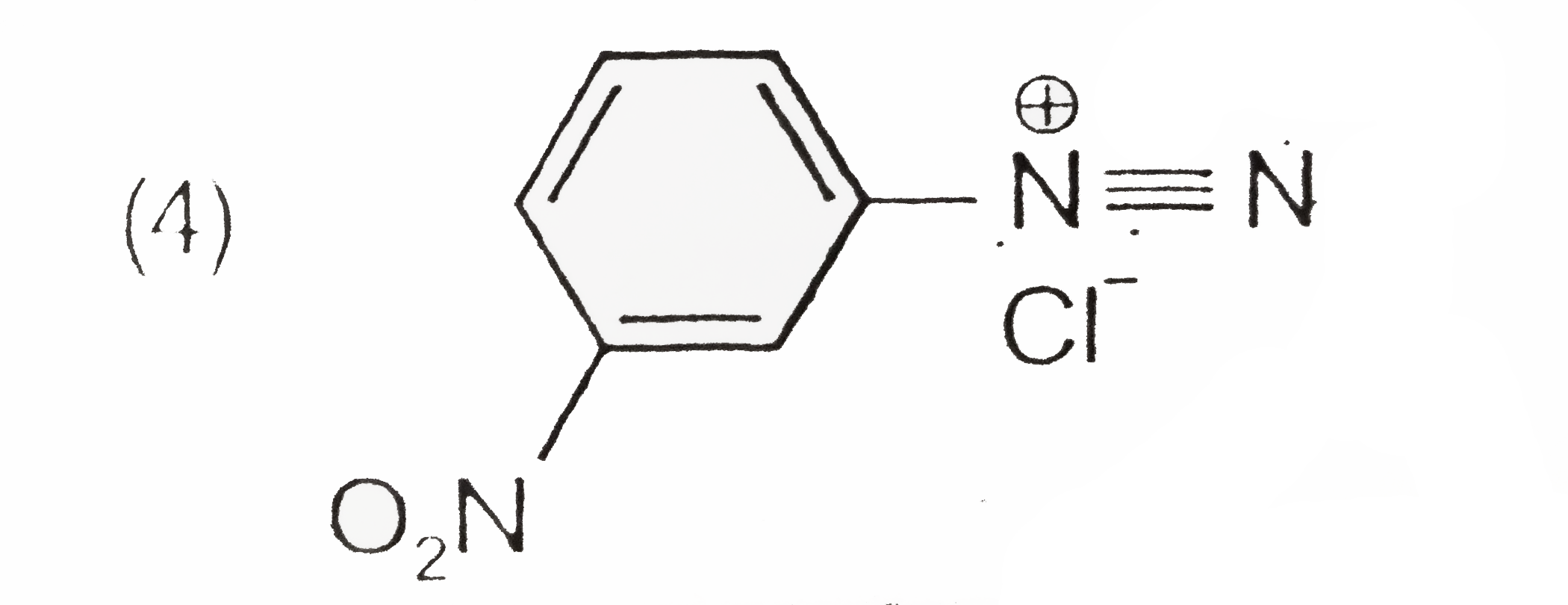Diazotization
Step by step video & image solution for Diazotization by Chemistry experts to help you in doubts & scoring excellent marks in Class 12 exams.
Updated on:21/07/2023Similar Questions
Treatment of primary amines with nitrous acid gives diazonium ions. Aliphatic diazonium ions decompose under the diazotization conditions to give complex mixture of products. Aryldiazonium ions are stable and is a valubale intermediate. They react with activated aromatic compounds to give coupling product.
What would be the product of the given reaction?

View SolutionAniline when diazotized in cold and then treated with dimethyl aniline gives a coloured product. Its structure would be
View Solution
Knowledge Check
Which of the following reactions belong to electrophilic aromatic substitution?
I. Bromination of acetanilide
II. Coupling reaction of aryl diazonium salts
III. Diazotization of aniline
IV. Acylation of aniline
Choose the correct option.AI and IIBII and IIICIII and IVDI and IVTreatment of primary amines with nitrous acid gives diazonium ions. Aliphatic diazonium ions decompose under the diazotization conditions to give complex mixture of products. Aryldiazonium ions are stable and is a valubale intermediate. They react with activated aromatic compounds to give coupling product.
At what pH phenol reacts with benzene diazonium chloride to give coupling product?A B
B C
C D
D
Treatment of primary amines with nitrous acid gives diazonium ions. Aliphatic diazonium ions decompose under the diazotization conditions to give complex mixture of products. Aryldiazonium ions are stable and is a valubale intermediate. They react with activated aromatic compounds to give coupling product.
At what pH phenol reacts with benzene diazonium chloride to give coupling product?ApH=2BpH=7CpH=9DpH=14
Aniline when diazotized in cold and then treated with dimethyl aniline gives a coloured product. Its structure would be
View SolutionAniline is diazotized and the diazonium salt hydrolysed to yield phenol which is brominated to produce C6H2(Br3)OH. Calculate the mass of the final product obtained from 9.3 g of aniline if the yield in the two steps is 45% and 70% (Atomic mass of Br=80)
View SolutionDiazonium salt formation and coupling reaction: When a reaction mixture of phenyl amine and nitrous acid is kept below 10∘C, a diazonium salt is formed. This reaction is called diazotization reaction.
_E01_892_Q01.png)
The diazonium ion, −N+2, is rather unstable and decomposes readily to nitrogen. However, delocalization of the diazonium from π−bond electron over a benzene ring phenyl diazonium sufficiently for it to form at low temperature. The phenyl diazonium ion behaves as an electrophile, and will attack another arene molecule such as phenol. Electrophilic subsitiution takes at the 4 position, producing 4-hydroxy phenyl azobenzene. The reaction is known as coupling reaction.
_E01_892_Q02.png)
The compound formed is an energetically stable, yellow azo dye (the azo group is −N=N−) The stability is due to extensive delocalisation of electrons via the nitrogen- nitrogen double bonds.
Benzene diazonium chloride on reaction with phenol in weakly basic medium gives :
View SolutionDiazonium salt formation and coupling reaction: When a reaction mixture of phenyl amine and nitrous acid is kept below 10∘C, a diazonium salt is formed. This reaction is called diazotization reaction.
_E01_891_Q01.png)
The diazonium ion, −N+2, is rather unstable and decomposes readily to nitrogen. However, delocalization of the diazonium from π−bond electron over a benzene ring phenyl diazonium sufficiently for it to form at low temperature. The phenyl diazonium ion behaves as an electrophile, and will attack another arene molecule such as phenol. Electrophilic subsitiution takes at the 4 position, producing 4-hydroxy phenyl azobenzene. The reaction is known as coupling reaction.
_E01_891_Q02.png)
The compound formed is an energetically stable, yellow azo dye (the azo group is −N=N−) The stability is due to extensive delocalisation of electrons via the nitrogen- nitrogen double bonds.
The azo dye obtained on reacting 4-aminophenol with nitrous acid (in dilute hydrochloric acid) below 10∘C and coupling the resulting diazonium salt with phenol is :
View SolutionDiazonium salt formation and coupling reaction: When a reaction mixture of phenyl amine and nitrous acid is kept below 10∘C, a diazonium salt is formed. This reaction is called diazotization reaction.
_E01_893_Q01.png)
The diazonium ion, −N+2, is rather unstable and decomposes readily to nitrogen. However, delocalization of the diazonium from π−bond electron over a benzene ring phenyl diazonium sufficiently for it to form at low temperature. The phenyl diazonium ion behaves as an electrophile, and will attack another arene molecule such as phenol. Electrophilic subsitiution takes at the 4 position, producing 4-hydroxy phenyl azobenzene. The reaction is known as coupling reaction.
_E01_893_Q02.png)
The compound formed is an energetically stable, yellow azo dye (the azo group is −N=N−) The stability is due to extensive delocalisation of electrons via the nitrogen- nitrogen double bonds.
The product_E01_893_Q03.png) which is a red azodye obtained on reacting benzene diazonium chloride with one of the following compounds :
which is a red azodye obtained on reacting benzene diazonium chloride with one of the following compounds :
View Solution
